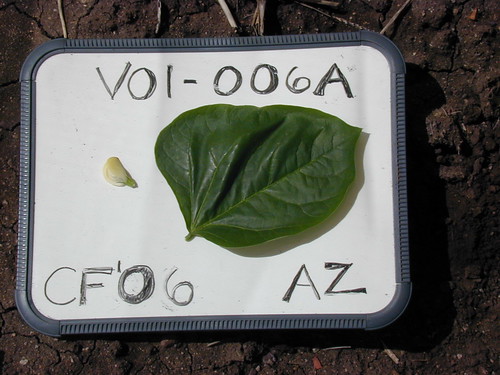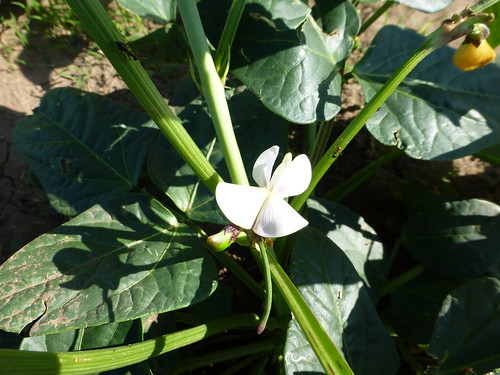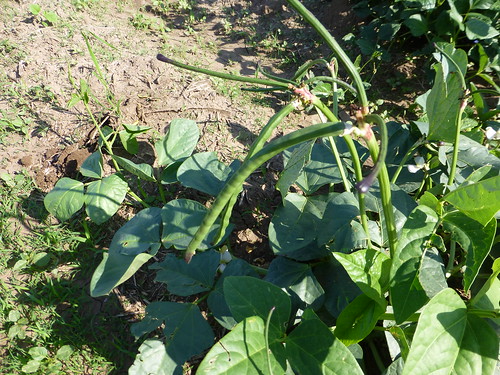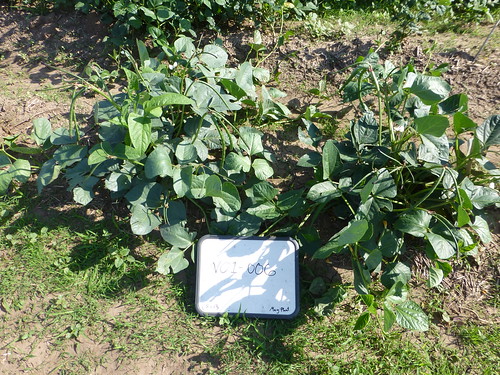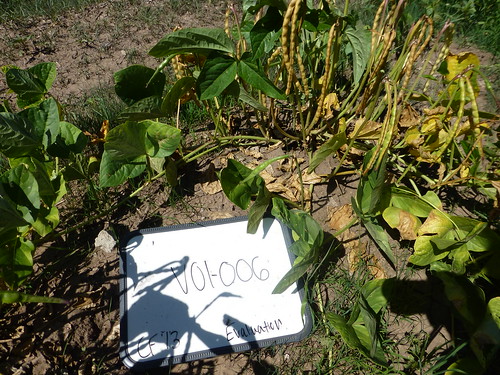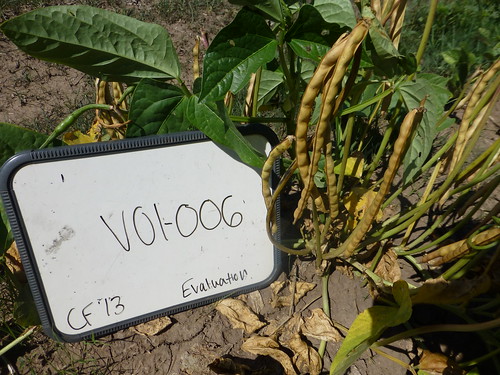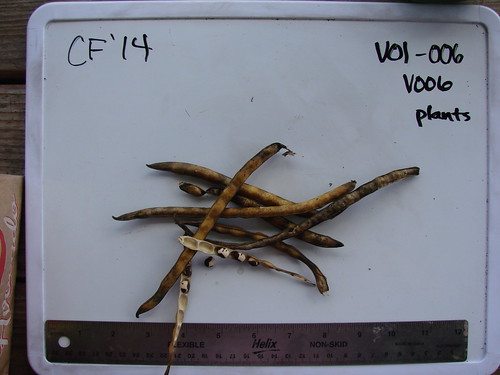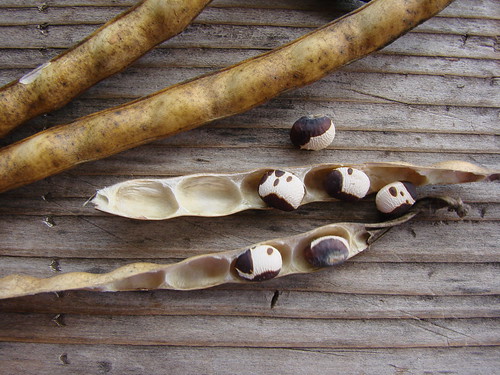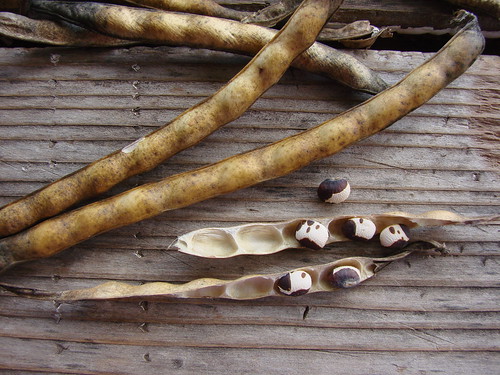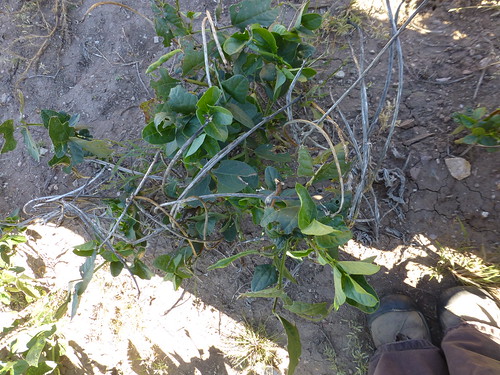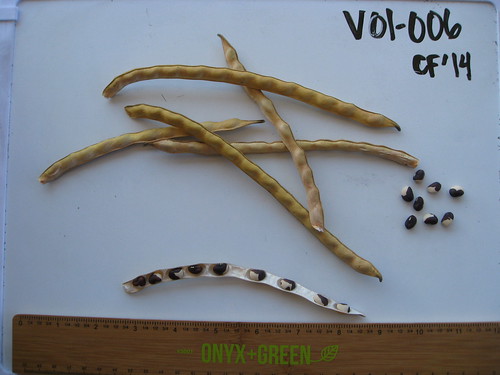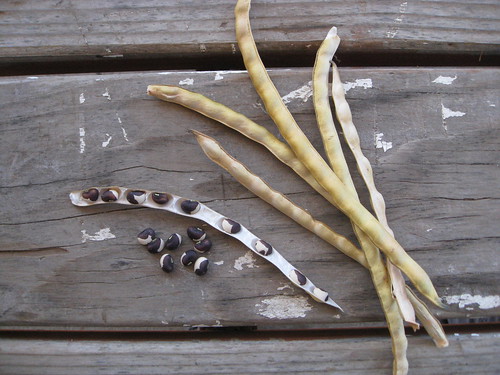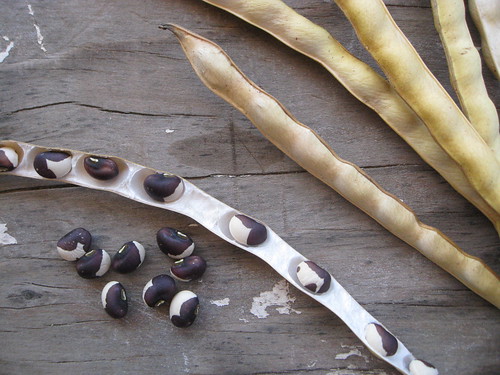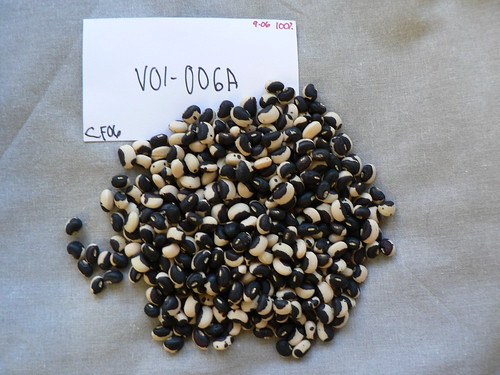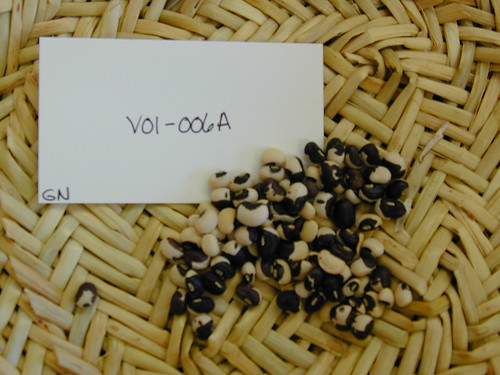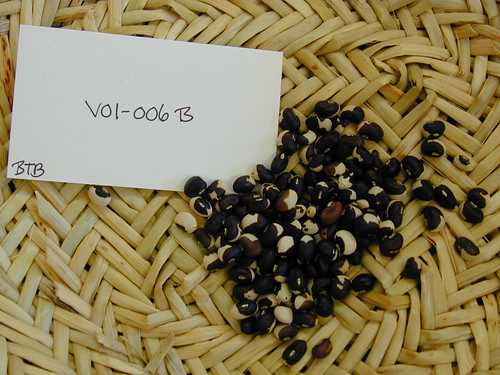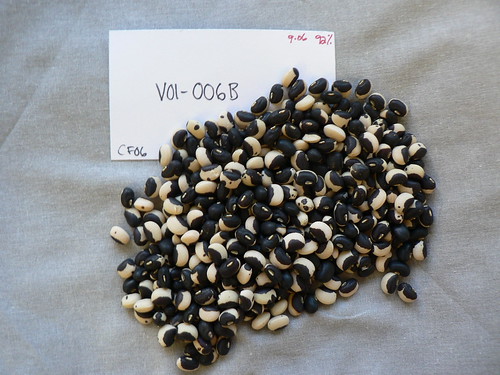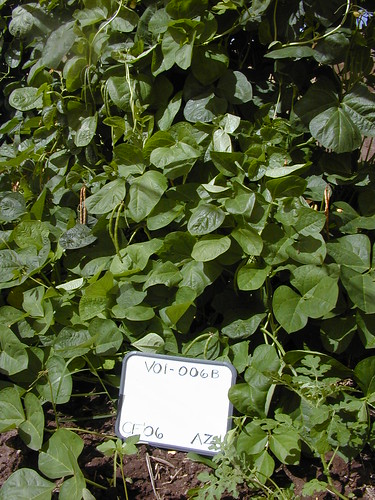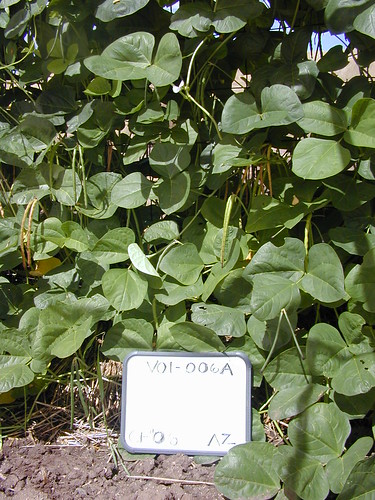ADAPTS
the Adaptive Drylands Agriculture Portal for The Southwest
V01-006
Collection | Availability | Map | Climate | Photographs | Observations | Cultivation & Seed Saving | Feedback
Basic Collection Information and Status
Cowpea (Vigna unguiculata, Fabaceae)
Cultural Affiliation Tohono O'odhamCollection Site Arizona, United States (latitude: 32°; altitude: 2,000 ft / 600 m)
Collection Year 1982
Accession Status Active
Catalog Information and Instructions
U'us Mu:nV006
“Tohono O'odham.” Also called Huhuda wu:pkan or U'us bawi. A gorgeous and prolific black and white bean with variable mottling. Excellent for green beans in the low desert.
View All 8 Accessions of U'us Mu:n (V006) (this will reset your search)
View All 8 Accessions of U'us Mu:n (V006) (this will reset your search)
Current availability of this variety is summarized below. We encourage the use of these seeds to benefit humanity and strive to facilitate access through a number of channels.
Online Order Native American Free Seed Community Seed Grants Bulk Seed Exchange ? Contact us for current availability.
Academic Researchers ? If you are an academic researcher with an interest in this accession, please get in touch with us. We encourage use of the seeds for appropriate research applications and are committed to protecting the rights of the people and cultures who developed and maintained this diversity and to its continued availability.
Note: Seeds are distributed on a variety-by-variety basis, rather than accession-by-accession. As there are multiple accessions of this variety, please contact us if you need seeds of this specific accession.
Collection Site
The circle in the map below shows the area where this accession was collected (why isn't the precise locality shown
?Precise collection localities are hidden in order to protect the privacy of the original donors of the seeds in the NS/S collection.
). You have not specified a reference site, but you may specify one and rerun your search.The graphs below summarize aspects of the climate for this accession's collection site. You have not specified a reference site, but you may specify one and rerun your search.
Photographs
The Native Seeds/SEARCH digital photo collection for this accession is provided below.
image hosting provided by Flickr — all photos © Native Seeds/SEARCH — please contact us for permission to useCharacterization and Evaluation
There are currently no observational data available for this accession. If you have made observations of this accession and are willing to share them, please contact us.
| Cowpea Introduction | Cultivation Instructions | Seed Saving Instructions |
|---|---|---|
| An introduced legume from Africa that tolerates high heat and drought. A good producer in the low, hot desert. Peas can be eaten green (immature) or dry. | Plant 1" deep and 6" apart, or in basins, into warm soil in spring or with summer rains. Plants sprawl, support is helpful for vine-types. Likes well drained soil, too much nitrogen will reduce yield. Pick very small for "green beans" or let dry on vine for dry peas. | An annual that is mainly self-pollinating. Dried pods should be harvested throughout the growing season. Mature pods will split open if left on the plant. |
If you have questions or feedback about this accession or the ADAPTS platform in general, please contact us.
